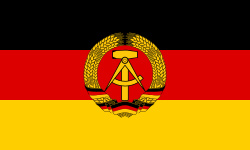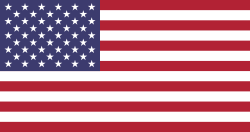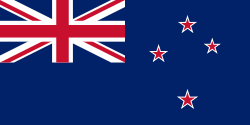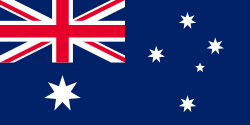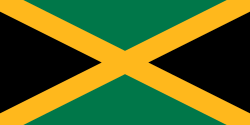Olympische Winterspiele 1988/Bob – Viererbob (Männer)
| Sportart | Bob | ||||||||
| Disziplin | Viererbob | ||||||||
| Geschlecht | Männer | ||||||||
| Teilnehmer | 104 Athleten aus 17 Ländern | ||||||||
| Wettkampfort | Canada Olympic Park | ||||||||
| Wettkampfphase | 27. bis 28. Februar 1988 | ||||||||
| Siegerzeit | 3:47,51 min | ||||||||
| |||||||||
| |||||||||
Olympischen Winterspielen 1988 | |
| Zweierbob | Männer |
| Viererbob | Männer |
Beim Viererbob der Männer bei den Olympischen Winterspielen 1988 fanden insgesamt vier Läufe statt. Die ersten beiden Läufe wurden am 27. Februar 1988 ausgetragen. Der dritte und vierte Lauf fanden am 28. Februar 1988 statt. Ausgetragen wurde der Viererbobwettbewerb der Männer auf der Calgary’s WinSport Bobsleigh/Luge Track.
Die Viererbob des Schweizers Ekkehard Fasser gewann überraschend Gold vor dem Bob von Wolfgang Hoppe aus der DDR. Bronze gewann der Viererbob von Jānis Ķipurs aus der Sowjetunion.
Ergebnisse
| Rang | Land | Athleten | Lauf (s) | Gesamt (min) | |||
|---|---|---|---|---|---|---|---|
| 1 | 2 | 3 | 4 | ||||
| 1 | Ekkehard Fasser Kurt Meier Marcel Fässler Werner Stocker | 56,83 | 57,37 | 55,88 | 57,43 | 3:47,51 | |
| 2 | Wolfgang Hoppe Dietmar Schauerhammer Bogdan Musiol Ingo Voge | 56,16 | 57,31 | 56,77 | 57,34 | 3:47,58 | |
| 3 | Jānis Ķipurs Guntis Osis Juris Tone Wladimir Koslow | 56,72 | 57,28 | 56,41 | 57,85 | 3:48,26 | |
| 4 | Brent Rushlaw Hal Hoye Mike Wasko Bill White | 56,72 | 57,67 | 56,69 | 57,20 | 3:48,28 | |
| 5 | Māris Poikāns Olafs Kļaviņš Ivars Bērzups Juris Jaudzems | 56,75 | 57.66 | 56,70 | 57,24 | 3:48,35 | |
| 6 | Peter Kienast Franz Siegl Christian Mark Kurt Teigl | 57,07 | 57,40 | 56,27 | 57,91 | 3:48,65 | |
| 7 | Ingo Appelt Josef Muigg Gerhard Redl Harald Winkler | 56,93 | 57,51 | 56,41 | 58,10 | 3:48,95 | |
| 8 | Detlef Richter Bodo Ferl Ludwig Jahn Alexander Szelig | 57,18 | 57,60 | 56,33 | 57,95 | 3:49,06 | |
| 9 | Hans Hiltebrand Urs Fehlmann Erwin Fassbind André Kiser | 56,39 | 57,91 | 57,13 | 57,82 | 3:49,25 | |
| 10 | Alex Wolf Pasquale Gesuito Georg Beikircher Stefano Ticci | 57,20 | 57,72 | 56,53 | 58,01 | 3:49,46 | |
| 11 | Anton Fischer Franz Nießner Uwe Eisenreich Christoph Langen | 57,02 | 57,75 | 56,71 | 58,07 | 3:49,55 | |
| 12 | Mark Tout David Armstrong Lenny Paul Audley Richards | 57,22 | 58,26 | 56,86 | 57,56 | 3:49,90 | |
| 13 | Greg Haydenluck Cal Langford Kevin Tyler Lloyd Guss | 57,18 | 57,82 | 56,67 | 58,32 | 3:49,99 | |
| 14 | Michael Sperr Olaf Hampel Florian Cruciger Rolf Müller | 57,58 | 58,04 | 56,41 | 58,14 | 3:50,17 | |
| 15 | Chris Lori Ken Leblanc Andrew Swim Howard Dell | 56,66 | 58,05 | 57,34 | 58,32 | 3:50,37 | |
| 16 | Brian Shimer Jim Herberich Matt Roy Scott Pladel | 57,17 | 58,49 | 57,47 | 58,10 | 3:51,23 | |
| 17 | Tom De La Hunty Colin Rattigan George Robertson Alec Leonce | 57,81 | 58,13 | 56,74 | 58,59 | 3:51,27 | |
| 18 | Takao Sakai Toshio Wakita Yuji Yaku Naomi Takewaki | 57,36 | 58,15 | 57,68 | 58,16 | 3:51,35 | |
| 19 | Roberto D'Amico Thomas Rottensteiner Paolo Scaramuzza Andrea Meneghin | 57,69 | 58,65 | 57,50 | 58,04 | 3:51,88 | |
| 20 | Csaba Nagy Lakatos Grigore Anghel Florian Olteanu Costel Petrariu | 57,41 | 58,49 | 57,64 | 58,35 | 3:51,89 | |
| 21 | Lex Peterson Blair Telford Rhys Dacre Peter Henry | 57,98 | 58,42 | 57,30 | 58,67 | 3:52,37 | |
| 22 | Chen Chin-san Chen Chin-san Lee Chen-tan Wang Jauo-hueyi | 57,03 | 58,94 | 57,98 | 58,80 | 3:52,75 | |
| 23 | Adrian Di Piazza Martin Harland Simon Dodd Stephen Craig | 58,20 | 58,87 | 57,25 | 59,02 | 3:53,34 | |
| 24 | Zwetosar Wiktorow Plamen Stamow Nikolay Botew Aleksandar Simeonow | 57,72 | 59,07 | 58,20 | 58,67 | 3:53,66 | |
| 25 | António Reis João Poupada João Pires Rogério Bernardes | 58,42 | 59,67 | 58,28 | 59,13 | 3:55,50 | |
| Dudley Stokes Devon Harris Michael White Chris Stokes | 58,04 | 59,37 | 63,19 | ausgeschieden | |||
Weblinks
- Viererbob bei den Olympischen Winterspielen 1988 in der Datenbank von Olympedia.org (englisch)
Auf dieser Seite verwendete Medien
Olympic Rings without "rims" (gaps between the rings), As used, eg. in the logos of the 2008 and 2016 Olympics. The colour scheme applied here was specified in 2023 guidelines.
Olympic Rings without "rims" (gaps between the rings), As used, eg. in the logos of the 2008 and 2016 Olympics. The colour scheme applied here was specified in 2023 guidelines.
Autor/Urheber: B1mbo, Lizenz: CC BY-SA 2.5
Zeichnung einer Goldmedaille, basierend auf Olympic rings.svg.
Die quadratische Nationalfahne der Schweiz, in transparentem rechteckigem (2:3) Feld.
Autor/Urheber: B1mbo, Lizenz: CC BY-SA 2.5
Zeichnung einer Silbermedaille, basierend auf Olympic rings.svg.
Die Staatsflagge der Deutschen Demokratischen Republik, vom 1. Oktober 1959 bis 3. Oktober 1990
Autor/Urheber: B1mbo, Lizenz: CC BY-SA 2.5
Zeichnung einer Bronzemedaille, basierend auf Olympic rings.svg.
Pictograms of Olympic sports - Bobsleigh
Flagge Österreichs mit dem Rot in den österreichischen Staatsfarben, das offiziell beim österreichischen Bundesheer in der Charakteristik „Pantone 032 C“ angeordnet war (seit Mai 2018 angeordnet in der Charakteristik „Pantone 186 C“).
Flag of Italy from 1946 to 2003, when exact colors were specified.
Flagge des Vereinigten Königreichs in der Proportion 3:5, ausschließlich an Land verwendet. Auf See beträgt das richtige Verhältnis 1:2.
Flagge des Vereinigten Königreichs in der Proportion 3:5, ausschließlich an Land verwendet. Auf See beträgt das richtige Verhältnis 1:2.
Flag of Canada introduced in 1965, using Pantone colours. This design replaced the Canadian Red Ensign design.
Variant version of a flag of Japan, used between January 27, 1870 and August 13, 1999 (aspect ratio 7:10).
Variant version of a flag of Japan, used between January 27, 1870 and August 13, 1999 (aspect ratio 7:10).
Flag of Romania, (21 August 1965 - 22 December 1989/officialy 27 December 1989).

Construction sheet of the Flag of Romania as depicted in Decree nr. 972 from 5 November 1968.
- l = 2/3 × L
- C = 1/3 × L
- S = 2/5 × l
Chinese Taipei Olympic Flag. According to the official website of Chinese Taipei Olympic Committee, Blue Sky(circle) & White Sun(triangles) above the Olympic rings is neither the National Emblem of the Republic of China, nor the Party Emblem of Kuomintang (KMT), but a design in between, where the triangles do not extend to the edge of the blue circle, as registered at International Olympic Committee in 1981 and digitally rendered in 2013. Besides, the blue outline of the five-petaled plum blossom is broader than the red one. Moreover, the CMYK code of the blue one and the Blue Sky & White Sun is "C100-M100-Y0-K0", and different from the Olympic rings (C100-M25-Y0-K0). Note that it's the only version recognized by IOC.
Chinese Taipei Olympic Flag. According to the official website of Chinese Taipei Olympic Committee, Blue Sky(circle) & White Sun(triangles) above the Olympic rings is neither the National Emblem of the Republic of China, nor the Party Emblem of Kuomintang (KMT), but a design in between, where the triangles do not extend to the edge of the blue circle, as registered at International Olympic Committee in 1981 and digitally rendered in 2013. Besides, the blue outline of the five-petaled plum blossom is broader than the red one. Moreover, the CMYK code of the blue one and the Blue Sky & White Sun is "C100-M100-Y0-K0", and different from the Olympic rings (C100-M25-Y0-K0). Note that it's the only version recognized by IOC.
Flag of Australia, when congruence with this colour chart is required (i.e. when a "less bright" version is needed).
See Flag of Australia.svg for main file information.Autor/Urheber: Scroch, Lizenz: CC BY-SA 3.0
Flag of Bulgaria (1971-1990). Flag of Bulgaria with Bulgarian coat from 1971.
Autor/Urheber: Scroch, Lizenz: CC BY-SA 3.0
Flag of Bulgaria (1971-1990). Flag of Bulgaria with Bulgarian coat from 1971.
Flagge Portugals, entworfen von Columbano Bordalo Pinheiro (1857-1929), offiziell von der portugiesischen Regierung am 30. Juni 1911 als Staatsflagge angenommen (in Verwendung bereits seit ungefähr November 1910).




